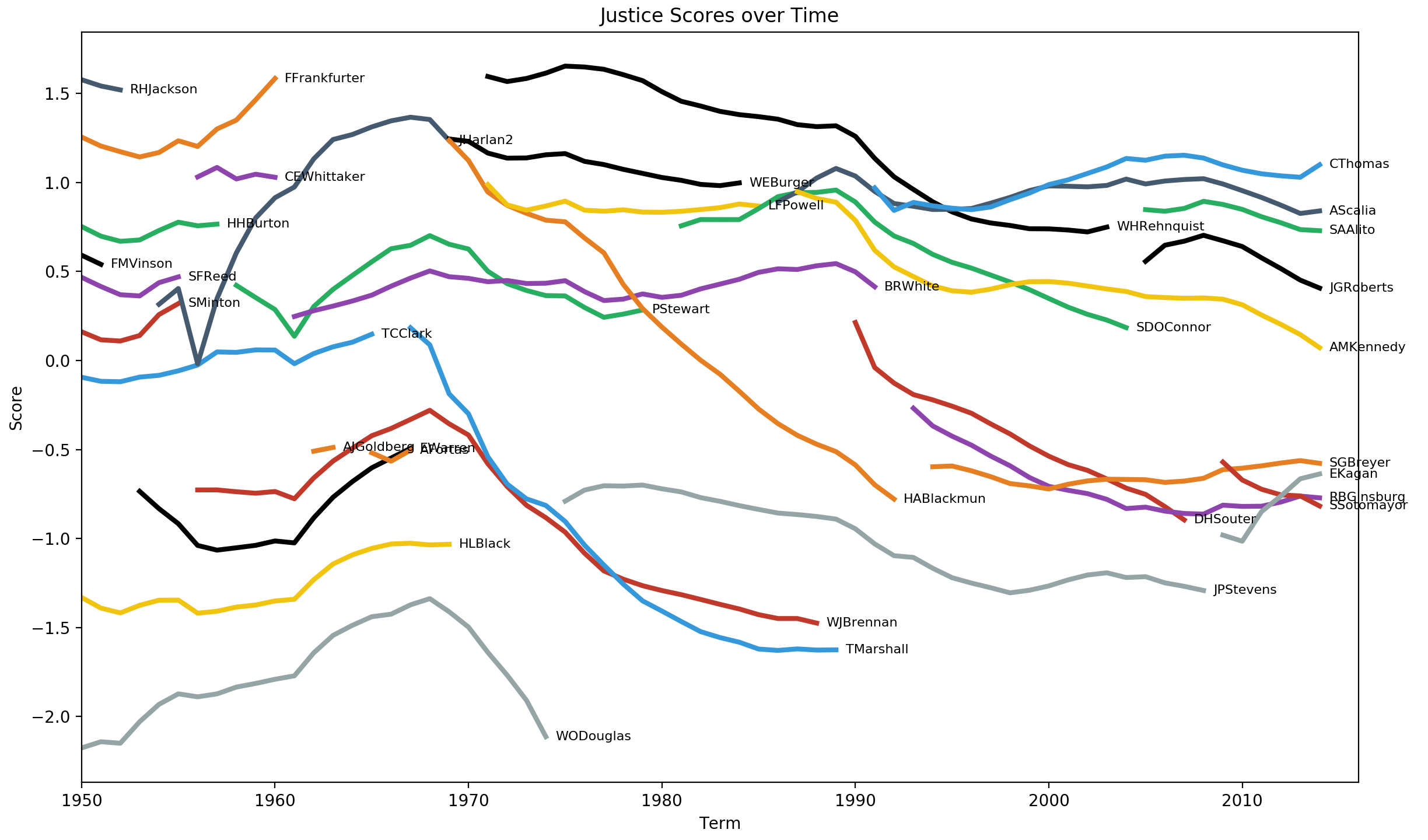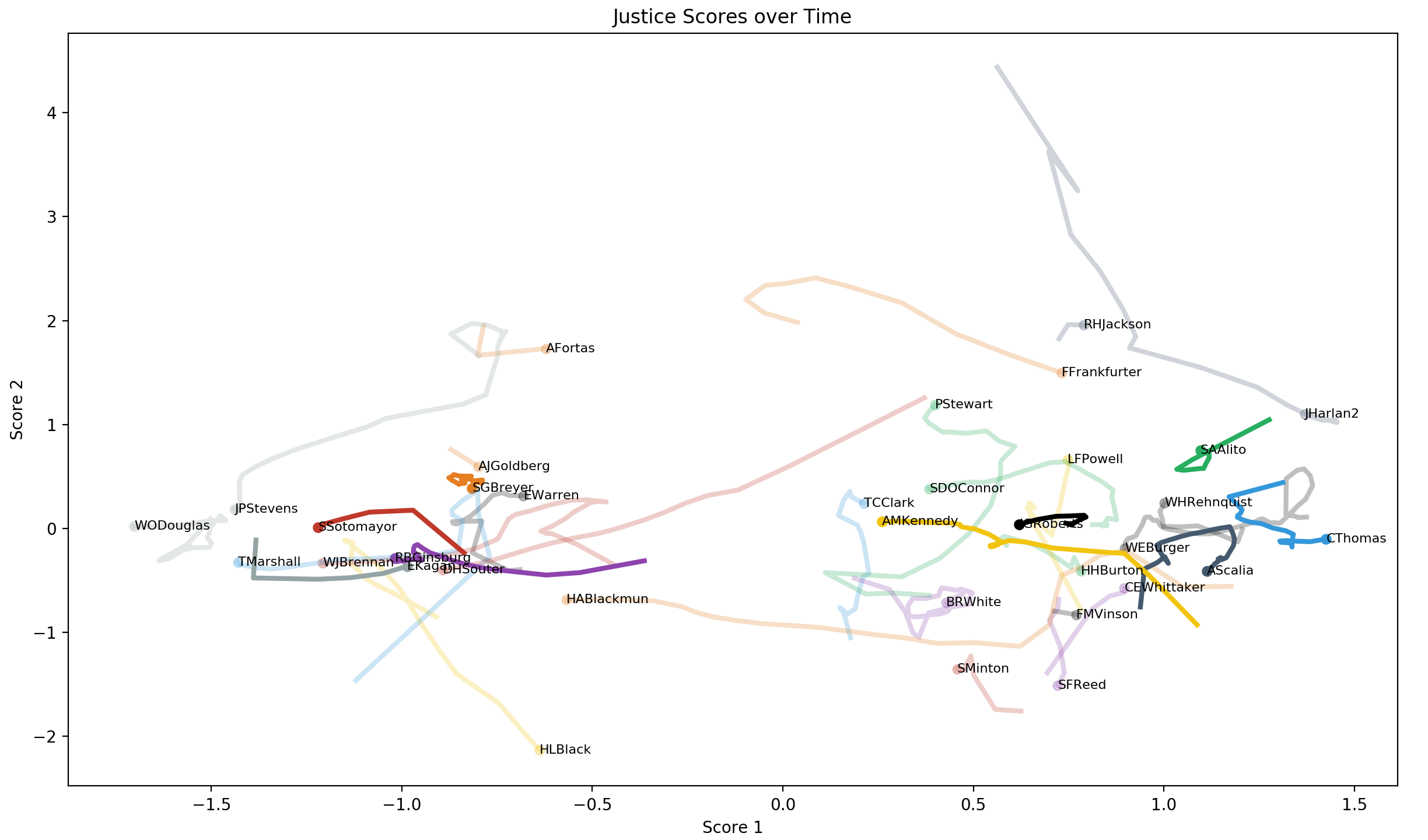The most common measure of Supreme Court justice ideology are the Martin–Quinn scores, developed by the eponymous political scientists. Since their original publication in 2002, the scores have been widely used, in political science and in the media, to place justices on a left–right political spectrum.
The scores are parameters in a Bayesian item-response model. These types of models originated in education research but have since been used to analyze legislatures and courts in the U.S. and around the globe. While there is much to like about these Bayesian models, they are computationally intensive, as they involve the estimation of hundreds, if not thousands, of parameters which are related by a nontrivial dependence structure.
Similar left–right scores, viewed as an approximation the Martin–Quinn scores, may be generated through a technique called multidimensional scaling, or MDS. One advantage of this approach, other than computational efficiency, is that it naturally generalizes to higher dimensions. MDS tries to find coordinates n-dimensional Euclidean space such that the pairwise distance between points matches that of a user-provided distance matrix. As this matrix is often much larger than the desired dimensionality of the MDS output, no perfect solution exists; MDS rather minimizes some loss function over the realized distance matrix (the details vary by flavor of MDS).
The figure below shows the approximate Martin–Quinn scores estimated by one-dimensional MDS. Positive scores reflect conservatism. The general leftward trend for individual justices is clear. Justices are colored by the seat on the court that they occupy; the chief justice is colored in black.

Many Supreme Court justices reject the notion that they fit neatly on a political spectrum, pointing to cases where the Court divided along lines that cannot be explained by left-right ideology. Other Court observers have suggested that a second dimension along which justices may be measured is that of pragmatism: how willing are justices to adapt the law to fit practical necessities, versus holding an ideologically consistent line?
The two-dimensional MDS scores, illustrated below, suggest that this dimension may indeed be important. While the scores are less stable (retroactive smoothing had to be applied to stabilize the MDS estimates), and harder to visualize (dots on each justice trajectory show the justices’ ending positions; retired justices are partially greyed out), the second dimension (the vertical axis) does seem to partially capture the pragmatic/idealist divide. Justices like Samuel Alito and Stephen Breyer, viewed as some of the more pragmatic justices on the current Court, have higher second-dimension scores than Antonin Scalia, for example.

Hopefully in the future we can fit a full Bayesian item-response model to better (and more stably) estimate these two-dimensional scores.